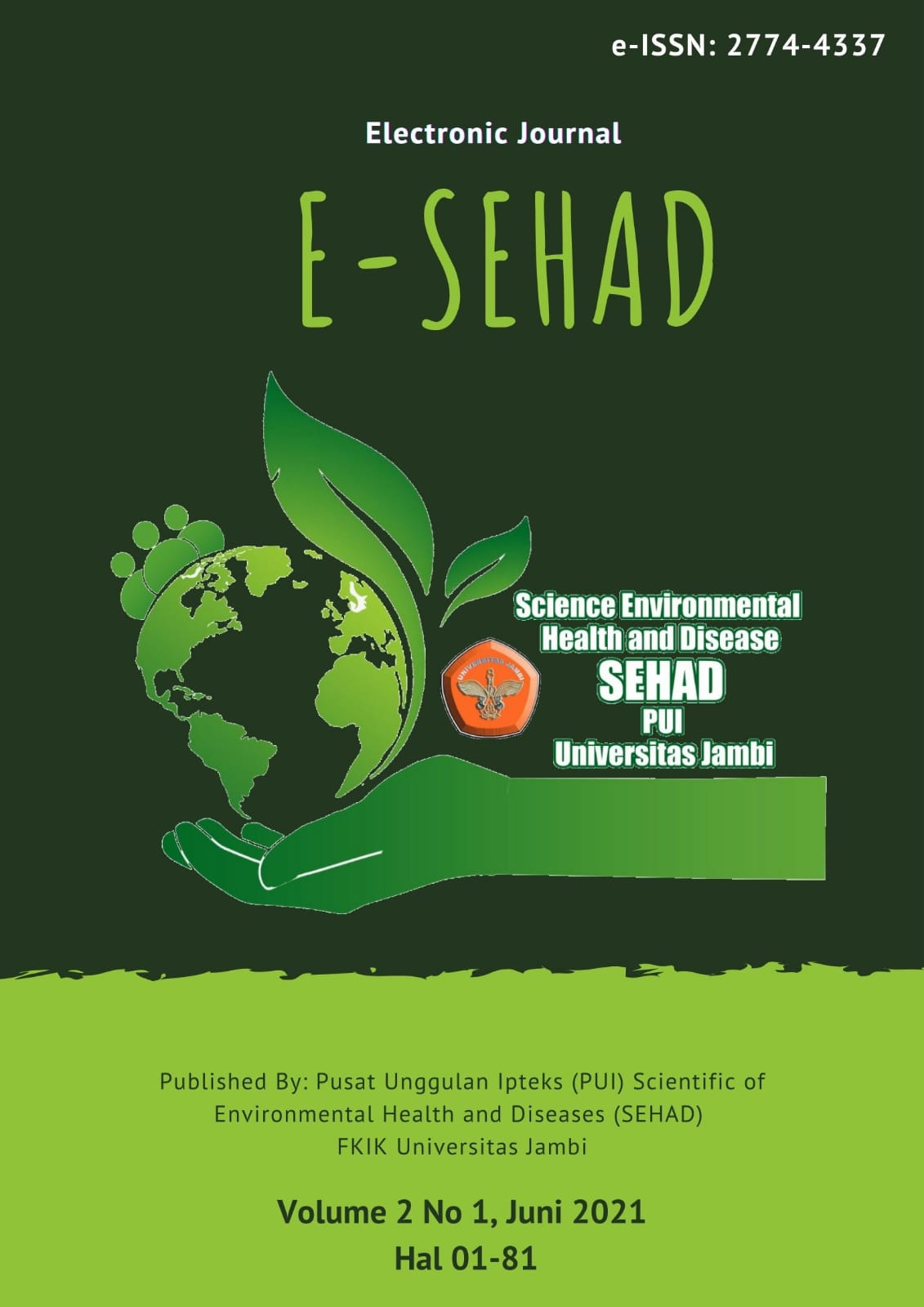EFEK INDOOR AIR POLLUTION TERHADAP KESEHATAN
DOI:
https://doi.org/10.22437/esehad.v2i1.13750Keywords:
Indoor Air Quality, Indoor Air Pollution, Health diseaseAbstract
ABSTRACT
In recent decades, indoor air quality has been of particular concern because of its contribution to health. It is estimated that as much as 90% of people spend their time indoors rather than outdoors. If the ventilation system is poor, it will result in an accumulation of pollutants in the room. These pollutants can come from outdoor air that enters the room, growing microorganisms, interior furniture or furniture or from the daily activities of humans themselves. The health problems that will be caused also vary. It can be from lung disease caused by inhalation of dangerous pollutants such as lung infections, pneumonia, asthma or COPD. Or other diseases such as Sick Building Syndrome, nasopharyngeal cancer, skin irritation, eye irritation, etc. To overcome this, careful planning is needed when building a room or building to minimize health problems due to indoor air, one of which is collaborating with several experts.
Keywords: Indoor Air Quality, Indoor Air Pollution, Health disease
ABSTRAK
Dalam beberapa decade terakhir,kualitas udara dalam ruangan menjadi perhatian khusus karena kontribusinya pada segi kesehatan. Diperkirakan ada sebanyak 90% orang-orang menghabiskan waktunya di dalam ruangan daripada di luar ruangan. Jika system ventilasi buruk, maka akan menghasilkan akumulasi polutan yang ada dalam ruangan. Polutan tersebut bisa berasal dari udara luar ruangan yang masuk ke dalam ruangan, mikroorganise yang tumbuh, perabotan atau furniture interior ruangan ataupun dari aktivitas keseharian manusia itu sendiri. Gangguan kesehatan yang akan diakibatkan pun bermacam-macam. Bisa dari penyakit paru akibat terhirup polutan yang berbahaya seperti penyakit infeksi paru, pneumonia, asma atau PPOK. Atau penyakit lain seperti Sick Building Syndrome, kanker nasofaring, iritasi kulit, iritasi pada mata, dll. Untuk mengatasinya perlulah perencanaan yang matang pada saat pembangunan sebuah ruangan atau gedung untuk meminimalisir gangguan kesehatan akibat udara dalam ruangan, salah satunya adalah berkolaborasi dengan beberapa ahli.
Keywords: Indoor Air Quality, Indoor Air Pollution, Health disease
Downloads
References
Cincinelli, A., & Martellini, T. (2017). Indoor Air Quality and Health. Int J Environ Res Public Health, 14.
Camelia, A. (2011). Sick Building Syndrome dan Indoor Air Quality. Jurnal Ilmu Kesehatan Masyarakat
Lin, B., Huangfu, Y., Lima, N., Jobson, B., Kirk, M., O'Keeffe, P., . . . Cook, D. J. (2017). Analyzing the Relationship between Human Behavior and Indoor Air Quality. Journal of Sensor & Actuator Networks, 6(3), 1-18. doi: 10.3390/jsan6030013
Tsacoyianis, R. (2008). Indoor Air Pollutants and Sick Building Syndrome: A Case Study and Implications for the Community Health Nurse. Public Health Nursing, 14(1), 58-75. doi: doi:10.1111/j.1525-1446.1997.tb00411
Oliver, L. C., & Shackleton, B. W. (2010). The Indoor Air We Breathe. Public Health Reports, 113(5), 398
Mu, L., Liu, L., Niu, R., Zhao, B., Shi, J., Li, Y., . . . Zhang, Z.-F. (2013). Indoor air pollution and risk of lung cancer among Chinese female non-smokers. Cancer Causes & Control, 24(3), 439-450. doi: 10.1007/s10552-012-0130-8
Kankaria, A., Nongkynrih, B., & Kumar Gupta, S. (2014). Indoor Air Pollution in India: Implications on Health and its Control. Indian Journal of Community Medicine, 39(4), 203-207. doi: 10.4103/0970-0218.143019
Sapkota, A., Gajalakshmi, V., Jetly, D., Roychowdhury, S., Dikshi, R., Brennan, P., & al, e. (2008). Indoor air pollution from solid fuels and risk of hypopharyngeal/laryngeal and lung cancers: A multicentric case control study from India. Int J Epidemiol, 37
EPA. (1991). Indoor Air Fact: Sick Building Syndrome. from Environmental Protection Agency
Jaakkola, J. J. K. (2008). The Office Environment Model: A Conceptual Analysis of the Sick Building Syndrome*. Indoor Air, 8(S4), 7-16. doi: doi:10.1111/j.1600-0668.1998.tb00002.
Joshi, S. M. (2008). The sick building syndrome. Indian Journal of Occupational & Environmental Medicine, 12(2), 61-64


